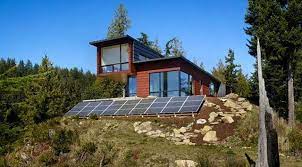From an Article by Bill McKibben, New Yorker Magazine, November 20, 2023
A Department of Energy report promotes a new system that could remake the energy grid.
On any given Monday in Vermont, Josh Castonguay, the vice-president of innovation at that state’s Green Mountain Power utility, told me, he studies the forecast for the days ahead, asking questions like “What’s it looking like from a temperature standpoint, a potential-of-load standpoint? Is there an extremely hot, humid stretch of a few days coming? A really cold February night?”
If there is trouble ahead, Castonguay prepares, among other things, Vermont’s single largest power plant, which isn’t exactly a power plant at all—or, at least, not as we normally think of one. It’s an online network, organized by the utility, of forty-five hundred electric storage batteries (currently, most of them are Tesla Powerwalls), spread out across more than three thousand Vermont homes.
The network also includes a broad array of residential rooftop solar panels, which produce the energy stored in those batteries, and smart water heaters and E.V. chargers. The people who have these assets aren’t off the grid; they’re Green Mountain Power customers who, for a discount on their bills, agree to plug their batteries (most of which are leased to own) and appliances into the utility’s network and let the company control the devices so that they use less power at critical moments. (If customers need to override the company’s commands, they can.)
This means that Castonguay (or, really, his algorithms) can program storage batteries to be charged a hundred per cent before a storm hits. Or, if it’s going to be a hot day, he can preheat water heaters in many homes in the morning, so that in the afternoon, as the temperature rises, more power will be available to run air-conditioners. He can also precool some big buildings in the morning. “Then, if you think about it, the building itself is the battery,” he said, in the sense that it stores chilled air for later in the day. “We have about fifty megawatts” of this distributed power, Castonguay told me. “At the scale of Vermont, that’s a lot.”
Utilities have always been able to dispatch supply, bringing power plants, which are often in idle mode, online as demand requires. Now they’re increasingly able to call up small, individual home power plants and dispatch demand as well, turning down thermostats or delaying car charging.
Green Mountain Power is at the forefront of this push; last month, it announced plans to install storage batteries for many of its customers — two hundred and seventy thousand homes and businesses, in total — in the next decade, pending regulatory approval. (Castonguay says it is testing a new home battery system, from FranklinWH— a company named for Ben Franklin, who actually coined the term “battery” — and that this apparatus seems to work as well as the Powerwall.)
But other companies are starting to follow. Green Mountain Power’s former C.E.O., Mary Powell, left three years ago and soon took over Sunrun, which supplies rooftop solar panels and storage batteries for hundreds of thousands of homes nationwide, and serves as a third-party power aggregator for several utilities. “We’re sitting on more than 1.1 gigawatt-hours of installed storage capacities just with our customers now,” she told me recently, much of it in California, where the company is based.
From August through October, as a series of heat waves pushed consumption up in that state, Pacific Gas and Electric was buying up to thirty megawatts of power through Sunrun every evening to keep peak demand down in its grid system. Sunrun’s customers who provided the energy got a check for seven hundred and fifty dollars.
“We went from contract to operation in six months,” Powell said. “You simply could not get a resource of that size built and operationalized any other way in that time frame.” And, she added, “it’s not just that we can make a more reliable, resilient grid” by drawing on the scattered resources; “We can also make a much more affordable grid,” because being able to use residential power means not having to build big, new power plants to meet peak demand. Taking in that money saved, she added, “We can shave ten billion dollars a year off the price of the country’s power system.”
#######+++++++#######+++++++#######
Source ~ The Next Power Plant Is on the Roof and in the Basement | Bill McKibben, The New Yorker, November 20, 2023

